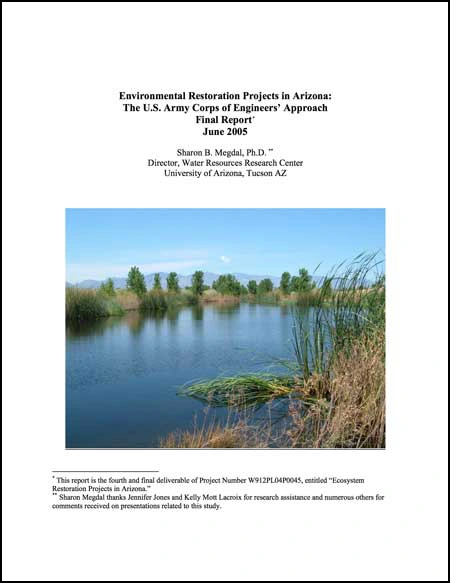
This paper is based on a presentation made at the Urban Design in Arid Regions Second International Symposium, Tucson, Arizona, January 23, 2005.
Introduction: Arizona is a state grappling with rapid population growth and prolonged drought. Historically, projects have been built to address flooding caused by heavy rainstorms. During the periods between rainstorms, rivers and washes are often dry. Controlling property damage due to flooding and meeting current and future water demands have long involved the construction of major public works projects involving federal and local agencies, sometimes along with the private sector. More recently, in order to replenish groundwater tables and store water for future use, public and private entities have become involved in water storage projects.1 During the same period, environmental restoration projects have been developed. In some instances, multiple purposes, such as replenishment of groundwater aquifers and environmental restoration, have been combined.
Arizona’s desert ecosystem and rapid growth have resulted in significant threats to, or diminishment of, riparian areas throughout the state. Projects to improve, restore and/or preserve the environment are important to the quality of human and non-human life in the Sonoran Desert. This report is a component of an effort to understand the purposes of ecosystem restoration projects, their design, including their water requirements and any water quality improvements, and their long-term viability and public benefits. Depending on the nature of and funding for the ecosystem restoration projects, these efforts are typically called ecosystem restoration, or environmental mitigation. In all cases they improve the environment over what it would be if no project were undertaken.
The focus of this paper is on Ecosystem Restoration Projects undertaken in Arizona by the United States Army Corps of Engineers (Corps), under their Civil Works Mission, in conjunction with local governments in the state. It reports on projects in Pima and Maricopa Counties, the two most populated counties in Arizona. By highlighting the purposes and components of the projects, a greater understanding of the development and implementation of such projects, as well as their costs and benefits, will be gained. In addition, a subsequent grant from the U. S. Bureau of Reclamation is supporting an expansion of this examination of ecosystem restoration. The paper briefly addresses the approach to expanding the study of ecosystem restoration and environmental enhancement projects in Arizona.

